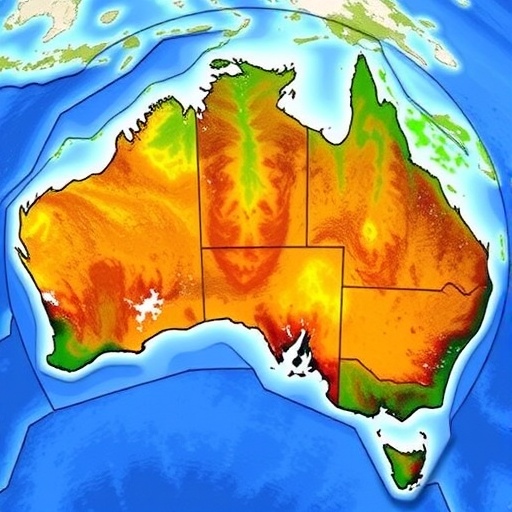Australia finds itself at a crossroads as a groundbreaking new study sheds light on the urgent need for enhanced conservation policies at both state and national levels. With over 220 species classified as critically endangered facing an ever-increasing threat of extinction, this study presents a dire warning that highlights the dire consequences of their limited distribution and the lack of adequate protection measures in place.
Led by the esteemed researchers at Griffith University, this pioneering study marks a significant advancement in our understanding of the specific environmental vulnerabilities that Australian species contend with. The team meticulously examined the habitats of these critically endangered species, assessing how much of their native environment falls outside of officially designated protected areas—which itself has implications for agricultural practices. The findings reveal a startling reality: many species’ habitats are not only underprotected but also at risk of being repurposed for agricultural use.
Among the alarming revelations from the study is the identification of critically endangered species with natural ranges measuring over 20,000 square meters. Compounding their vulnerability is the fact that these species exist in fewer than six distinct patches across the landscape. This fragmentation of habitat exacerbates their risk, as smaller populations become increasingly isolated, hindering genetic diversity and overall resilience to environmental changes.
The authors of the study assert that immediate action is paramount. They advocate for the preservation and management of approximately 85,000 square meters of habitat—equivalent to a mere 1% of Australia’s total land mass. This step is deemed essential to fulfill Australia’s commitment to halting new extinctions and enables the nation to take a proactive stance in safeguarding its natural heritage.
“Globally, we know that species with small distributions face disproportionate extinction risk,” emphasized Dr. Michelle Ward from Griffith’s School of Environment and Science. The research poignantly illustrates that land-use changes exert catastrophic impacts on species already teetering on the edge of extinction. Therefore, identifying and protecting critical habitats becomes not just a policy matter, but a moral imperative for the preservation of biodiversity.
Dr. Ward’s passionate plea underscores the struggle that many of these vulnerable species face. “Identifying, protecting, and managing sites where such species occur is essential for minimizing their extinction risk,” she stated. Despite the clear evidence of necessity, the study finds that conservation efforts across Australia have historically been insufficient. This stark reality fuels a sense of urgency among conservation advocates and scientists alike.
Delving deeper into the study’s key findings, it becomes evident that the challenges facing the 85,000 square meters of habitat are multifaceted. Around fifty percent of this critical habitat is located outside of the designated protected area system, including the entire known range of an alarming 39 species. This absence of legal protections places these species in jeopardy, as they are increasingly subjected to the whims of agricultural expansion and other land-use practices.
Further complicating this dire situation is the fact that approximately 55% of habitat located outside protected areas possesses some level of agricultural capability. This statistic highlights an underlying tension between agricultural development and conservation efforts, revealing how forces driving economic growth can conflict with the need for environmental stewardship. The prospects for these vulnerable species grow bleaker as agricultural interests increasingly encroach upon their dwindling habitats.
The study reveals that the majority of critically endangered species at risk in Australia are, rather disturbingly, plants, with 228 species identified. This relatively high number emphasizes the complexity of plant conservation, which often goes overlooked compared to more charismatic fauna. Following the plants are reptiles with 20 species at risk, frogs with 14, and various other animals, demonstrating the breadth of biodiversity affected by these conservation challenges.
The Australian Land Conservation Alliance’s CEO, Jody Gunn, brought attention to the critical role private land plays in the preservation of these endangered species. “The future of many species depends on what happens on private land,” she stated, reinforcing the notion that conservation efforts must extend beyond public parks and reserves. Acknowledging the dedication of landholders across Australia who are already taking steps to support local biodiversity, Gunn emphasized the need for the right policies and investment to translate their goodwill into tangible, long-lasting conservation outcomes.
Dr. Ward supports this perspective, noting the dual necessity of protecting habitats while positioning the preservation and management of narrow-range species as a foremost priority within local, state, and national conservation strategies. “Our case study serves as a template for the identification of important habitat for threatened species and could be applied in other regions of the world,” she further elucidated, hinting at the broader implications of this research on global biodiversity conservation efforts.
Such a comprehensive approach is critical in establishing a framework that empowers local communities and land managers to take ownership of conservation practices. By integrating scientific research with community engagement, it is conceivable to foster environments where both agriculture and biodiversity thrive harmoniously.
As the study has been published in the journal Biological Conservation, it paves the way for future research and policy discussions aimed at addressing the multifaceted challenges facing critically endangered species across Australia. With its meticulously gathered data and actionable insights, the study promises to invigorate the conservation conversation—a clarion call for change in strategies that protect our most vulnerable species.
The challenges remain vast and complex, but there exists hope that through concerted efforts—bolstered by rigorous research and community engagement—the trajectory of extinction can be reversed. With an acute understanding of the importance of habitat management and protection, Australia can take definitive steps towards safeguarding its unique and precious biodiversity for generations to come.
Subject of Research: Conservation policies for critically endangered species in Australia
Article Title: Half of the habitat for Australia’s highly imperilled narrow-range species is outside protected areas
News Publication Date: October 2023
Web References: Biological Conservation
References: Griffith University research findings
Image Credits: Griffith University
Keywords
biodiversity, conservation, endangered species, Australia, habitat preservation, agricultural impact, environmental science, ecological policy, community engagement, climate change, species extinction, conservation strategies




